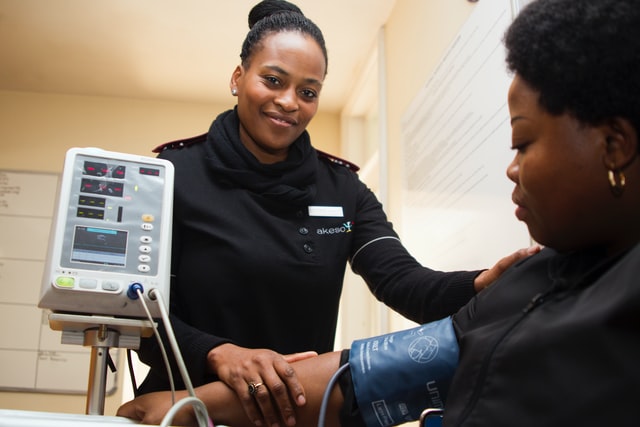Spending time in the hospital is rarely an enjoyable experience for the patient. Long waiting times, busy wards, and feeling isolated from family can make a hospital stay stressful, especially for longer-term stays as an inpatient.
A 2021 study by The Beryl Institute highlighted the need for healthcare organisations to implement processes designed to improve the patient experience by ensuring they feel listened to and communicated with effectively. One way to do this is through access to media and WiFi.
There are several ways internet access can be embedded into healthcare. The solution that encompasses easily accessible WiFi and entertainment is a Patient Engagement Platform (PEP), a digital tool that provides healthcare information from a patient’s smartphone or tablet device.
A PEP also offers hospital radio, site maps, digital games, appointment check-ins, free television and even digital meal ordering through guest access WiFi.
While the entertainment offered by PEPs is important, patient experience is about improving outcomes. The healthcare information available means patients can be educated on their health status and become actively involved in their care.
The current issues facing healthcare

Long wait times, staff shortages, and budget cuts are some of the ongoing issues the healthcare industry constantly faces. With COVID-19, these issues only worsened. Almost a third of doctors said the impact of the pandemic was making the care for non-COVID patients significantly worse.
Even without the pandemic, there are certain things hospitals cannot avoid. From getting lost in facilities and feeling isolated and bored, many things can ruin a patient’s normal experience of the healthcare system.
Studies have shown better patient experiences lead to better health outcomes, so employing tactics such as investing in PEPs can only improve the situation for everyone involved.
Keeping patients informed

With 64% of people encountering false or misleading health information at least once a day at the height of the pandemic, it has become difficult for patients to find the line between fact and fiction.
With a PEP, healthcare professionals can easily share critical information with patients about their health journey and access educational content. This information can be kept up-to-date to be proactive to patients’ changing needs.
Receiving a diagnosis can be a stressful experience for patients and can lead to patients not fully retaining all information. In fact, studies showed up to 80% of what doctors tell patients is forgotten almost immediately.
With a digital patient engagement solution, such as a PEP, patients can access more information that can help them retain essential details about their healthcare management, making them more involved in their own care and less likely to worry about being out of the loop.
Improving the doctor-patient relationship

Inpatients recovering or being treated on a ward can often feel agitated and isolated and feel like they’re out of the loop on their own situation. Patients can entertain themselves with access to entertainment from television and films to magazines, radio, and video games.
For example, when a patient is preoccupied with television or video games, they’re much less likely to interrupt the work of nurses and doctors over minor or non-urgent issues. Efforts to improve patient experience have also improved employee satisfaction and reduced staff turnover.
They can also take advantage of information, links, and educational videos about their diagnosis. This can encourage them to learn about their situation and see what steps they can take to recover in the best way possible.
The ability to check-in for appointments easily improves the experience of the patients by making the process quicker, but it can also help staff who feel stressed. Doing this from your device means patients don’t have to queue to use the communal check-in screens, saving time and ensuring social distancing. With happy healthcare professionals, their relationships with patients are likely to improve.
Feeling entertained and involved will also actively increase patient satisfaction and willingness to cooperate or collaborate with doctors.
Involving family and friends

Many people were forced to embrace technology in hospitals when the COVID-19 pandemic meant patients could no longer receive visitors. Video calling became the only face to face connection many inpatients had to the outside world.
This connection was encouraged by healthcare professionals, with family input and involvement being directly linked to the quality of care a patient receives and improving their health outcomes.
A PEP allows patients to share their health situation with friends and family. Getting input from external sources who want what’s best for the patient can also aid in knowing the kind of care to provide at home.
Involving family and friends also helps develop an environment conducive to open conversations and questions, which will ease the stress of dealing with health issues.
Ultimately, a Patient Engagement Platform gives patients the independence and entertainment to keep their minds active without impacting the work of healthcare professionals. Not only that, the empowerment provided by this solution means readmission rates are likely to reduce as patients can better understand their situation, follow the guidance in their Doctor’s Note and continue with effective care after discharge.
Patient engagement platforms are continuously evolving to keep up with changing technology, patient requirements and industry innovations. WiFi SPARK are the proud owners of the NHS’ favourite PEP, SPARKⓇ Media. The home of digital engagement, the platform collates entertainment, engagement, and education in one place to better the lives of patients, visitors and staff.

